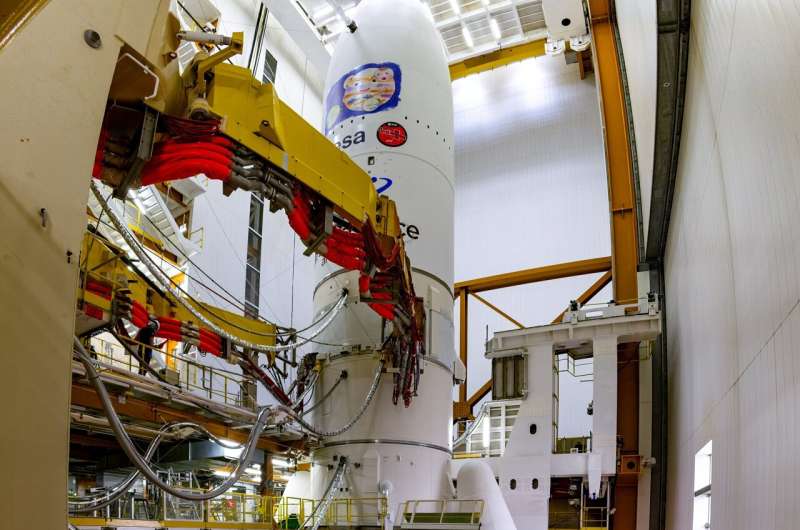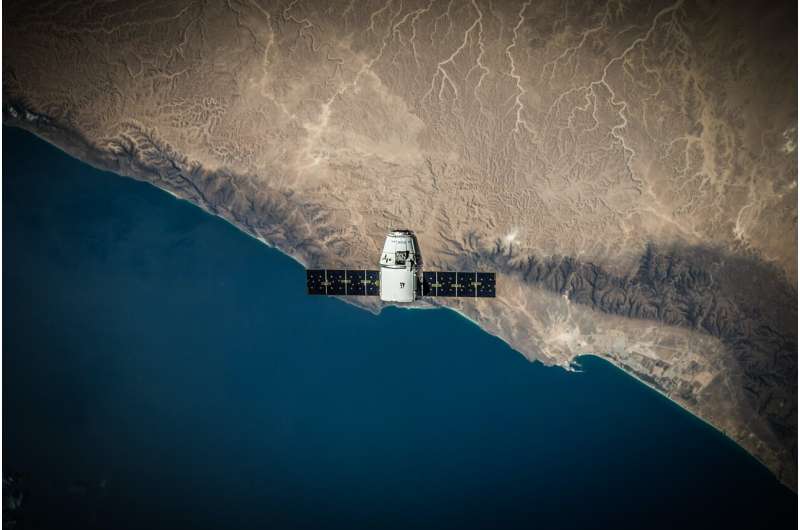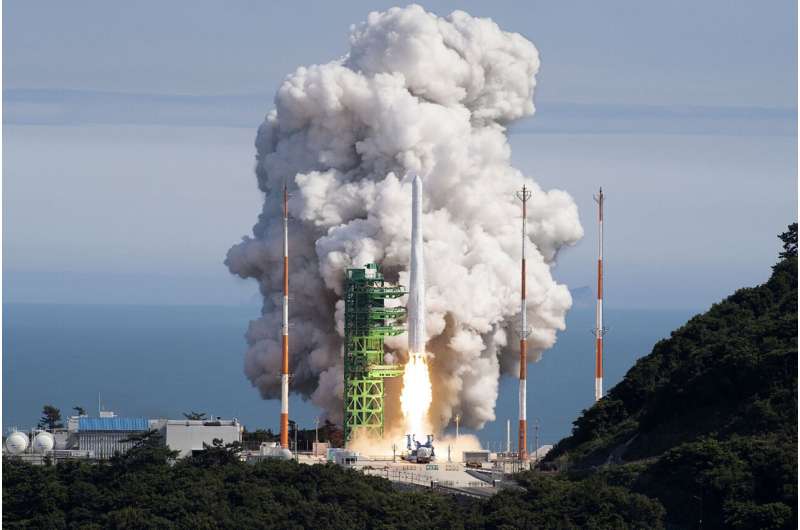
Copernical Team
Curiosity software upgrade complete: Sol 3796
 As Ken noted in his recent blog, our beloved rover spent much of the last week completing a software upgrade while the science team met virtually to synthesize and discuss results.
That upgrade has been completed successfully, and Curiosity was back to work characterizing a local canyon in an effort to study the composition and sedimentology of the geologic units above "Tapo Caparo." While
As Ken noted in his recent blog, our beloved rover spent much of the last week completing a software upgrade while the science team met virtually to synthesize and discuss results.
That upgrade has been completed successfully, and Curiosity was back to work characterizing a local canyon in an effort to study the composition and sedimentology of the geologic units above "Tapo Caparo." While Rocket Lab moves CubeSat from Virginia to New Zealand
 Aerospace manufacturer Rocket Lab announced that it is moving its planned launch of NASA storm-monitoring CubeSats from Virginia to New Zealand.
The company said Monday that the two launches, which had been scheduled to take place at the company's launch complex in Wallops Island, Va., will instead be moved to Mahia, New Zealand.
The first launch is scheduled for no earlier than
Aerospace manufacturer Rocket Lab announced that it is moving its planned launch of NASA storm-monitoring CubeSats from Virginia to New Zealand.
The company said Monday that the two launches, which had been scheduled to take place at the company's launch complex in Wallops Island, Va., will instead be moved to Mahia, New Zealand.
The first launch is scheduled for no earlier than NASA Boosts Open Science through Innovative Training
 NASA is awarding a total of $6.5 million to U.S. institutions for education and training in open science. The promise of open science is that NASA research and data should be more collaborative, accessible, inclusive, and transparent for everyone from the scientist and student to the city manager and citizen.
The agency's Open-Source Science Initiative (OSSI) is promoting change in the ope
NASA is awarding a total of $6.5 million to U.S. institutions for education and training in open science. The promise of open science is that NASA research and data should be more collaborative, accessible, inclusive, and transparent for everyone from the scientist and student to the city manager and citizen.
The agency's Open-Source Science Initiative (OSSI) is promoting change in the ope China's 3D printed afterburning liquid rocket engine tested during recent mission
 Tianbing Technology has made a breakthrough in rocket technology with the successful first flight of the Tianlong-2 liquid carrier rocket. The rocket used the liquid oxygen kerosene engine TH-11V, which was independently developed by Tianbing Technology. This engine is the world's first closed-cycle supplementary combustion engine that uses 3D printing technology.
During the 285-second fli
Tianbing Technology has made a breakthrough in rocket technology with the successful first flight of the Tianlong-2 liquid carrier rocket. The rocket used the liquid oxygen kerosene engine TH-11V, which was independently developed by Tianbing Technology. This engine is the world's first closed-cycle supplementary combustion engine that uses 3D printing technology.
During the 285-second fli China releases rocket rideshare schedule in 2023, 2024
 China Aerospace Science and Technology Corporation (CASC) has recently announced its rocket rideshare program schedule for the years 2023 and 2024. The program will consist of nine launch opportunities, with launch windows spanning from August 2023 to the fourth quarter of 2024.
According to CASC, the carrier rockets for the program will be developed by its subsidiaries, the China Academy
China Aerospace Science and Technology Corporation (CASC) has recently announced its rocket rideshare program schedule for the years 2023 and 2024. The program will consist of nine launch opportunities, with launch windows spanning from August 2023 to the fourth quarter of 2024.
According to CASC, the carrier rockets for the program will be developed by its subsidiaries, the China Academy Ariane 5 flight VA260, carrying the Juice mission, is fully integrated and ready for rollout

Ariane 5 for flight VA260 carrying ESA's Juice mission is seen here fully integrated and ready for rollout for its planned April 13, 2023 launch from Europe's Spaceport in French Guiana.
Juice—JUpiter ICy Moons Explorer—is humankind's next bold mission to the outer solar system. After an eight-year journey to Jupiter, it will make detailed observations of the gas giant and its three large ocean-bearing moons: Ganymede, Callisto and Europa.
This ambitious mission will characterize these moons with a powerful suite of remote sensing, geophysical and in situ instruments to discover more about these compelling destinations as potential habitats for past or present life. Juice will monitor Jupiter's complex magnetic, radiation and plasma environment in depth and its interplay with the moons, studying the Jupiter system as an archetype for gas giant systems across the universe.
Provided by European Space Agency
In booming satellite market, micro-rockets are the next big thing

More and more miniature satellites are being launched every year, driving up demand for smaller rockets.
Contemporary life would hardly be possible without satellites. Much of what people do on Earth today relies heavily on what's happening high above their heads—from monitoring wildfires, deforestation and sea-surface temperatures to enabling connections to new mobile technologies like 5G in hard-to-reach areas.
A recent wave of cheaper, miniature satellites being sent into low orbits of 500 to 1,000 kilometers above Earth by the likes of Elon Musk's SpaceX and UK-based OneWeb signals a growing trend.
Less is more
With some tracking the globe's whole landmass and providing unprecedented detail, these satellites can be the size of a shoebox or even smaller.
Ariane 5 flight VA260, Juice: fully integrated and ready for rollout
 Image:
Ariane 5 flight VA260, Juice mission: fully integrated and ready for rollout at Europe's Spaceport in French Guiana
Image:
Ariane 5 flight VA260, Juice mission: fully integrated and ready for rollout at Europe's Spaceport in French Guiana S Korea to conduct 1st launch of commercial-grade satellite

Juice: running on solar power in the dark

Welcome to Jupiter space: to one side looms the vast cloudy face of the largest planet in our Solar System; in the other appears a shrunken Sun, like a spotlight in the sky, with just 3% of the illumination from Earth orbit arriving here. This basic fact presented a major challenge to those planning ESA’s Jupiter Icy Moons Explorer, Juice, mission: how to make solar power work in such a gloomy environment, located an average 778 million km away from our parent star?
